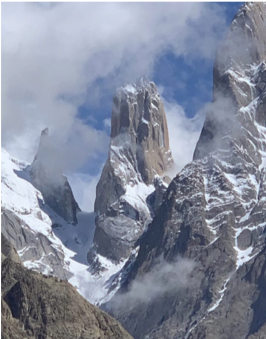
Malcolm Richard Howells, a pioneer in x-ray optics and x-ray imaging, and an important contributor in the early days of the ALS to the design of beamlines and early x-ray imaging experiments, died on November 24, 2021. As the international leader of the design of soft x-ray monochromators, beamline optics, and opto-mechanics from the 1970s through the 1990s, his early work on the aberration theory of TGM and SGM (toroidal grating monochromator and spherical grating monochromator) systems was foundational. He was also a pioneer in early experiments in x-ray imaging using coherent light. He helped make the scientific case for construction of the ALS, and throughout his career pursued development of the theory and applications of transverse x-ray coherence to imaging, scattering, holography, and interferometry. He coauthored an early book on x-ray microscopy and popularized the concept at a crucial time by coauthoring an article on the subject in Scientific American.
Malcolm’s impact across the synchrotron radiation community was enormous. He was a long-time collaborator of former ALS Director Janos Kirz, starting at the National Synchrotron Light Source (NSLS) and continuing when both migrated to the ALS. With John Spence, the two helped train many leading scientists in the current generation of soft x-ray microscopists, including Chris Jacobsen, Ian McNulty, Henry Chapman, David Shapiro, and Johanna Nelson-Weker.

Malcolm began his career in 1970 at the first-generation source NINA in Daresbury (UK), then went to NSLS in 1979, and from there to the ALS in 1986. At NSLS and the ALS, Malcolm worked closely with Wayne McKinney on pioneering studies of grazing-incidence x-ray optics theory, and also on the implementation of electroless nickel-plated Glidcop substrates for high-power mirrors and gratings and their implementation in practical beamline designs. He led the design of the first soft x-ray beamlines at NSLS and was the head of the ALS optical sciences group in the Experimental Systems Group for many years. As well as being a pioneer in the theory of optical system design, Malcolm was fascinated by the precision mechanical engineering of optical systems and became a leader in the engineering of high-heat-load optics, deformable optics, and optical support systems, as well as the use of new materials for optical elements. This combination of a complete understanding of x-ray optical theory, the theory of coherent light propagation, along with a deep knowledge of ultra-high-precision opto-mechanical systems marks him as one of the foundational leaders in the history of synchrotron radiation.
Following his retirement from the ALS, he worked at several European synchrotrons including European Synchrotron Radiation Facility (France), Diamond (UK), and Alba (Spain), making contributions to the design of new beamlines as well as continuing his work in imaging using coherent light and educating a new generation of x-ray scientists.
For his many contributions to x-ray synchrotron optics, he was an elected fellow of Optica (formerly The Optical Society) and SPIE.
David Shapiro, ALS microscopy program lead, noted that Malcolm “impacted many people with his deep understanding of x-ray science and his generous effort.” He added, “I think you can draw a direct path from the future of the ALS—ALS-U—through Malcolm’s work in the earlier days of the ALS and before that at NSLS. It’s amazing to me to think about all of the careers and lives that have been positively impacted by his work. It’s something that we all aspire to.”

Malcolm was also an internationally recognized and accomplished rock and mountain climber and avid skier. With fellow Britons Joe Brown, Mo Antoine, and Martin Boysen in 1976, he was first to climb, via the Southwest Face, the Trango (Nameless) Tower, a huge, pointed spire in the Karakorum range, near K2. He also climbed many of the classic routes in Yosemite, including El Capitan twice.
Chris Jacobsen, Argonne distinguished fellow and professor of physics and astronomy at Northwestern University, summarized Malcolm’s life and career. “He approached life with verve, bringing a combination of strong interest and dogged persistence in his scientific work—but always with a sense of humor and love of life. Our lives are richer because of his.”
Malcolm was a unique individual who was a pioneer in all the ventures that he took on, and he will be deeply missed by all his colleagues and the generations of scientists that he trained and who now walk in his footsteps.
Contributors: Steve Kevan, Janos Kirz, Howard Padmore, Wayne McKinney, Chris Jacobsen, and David Shapiro